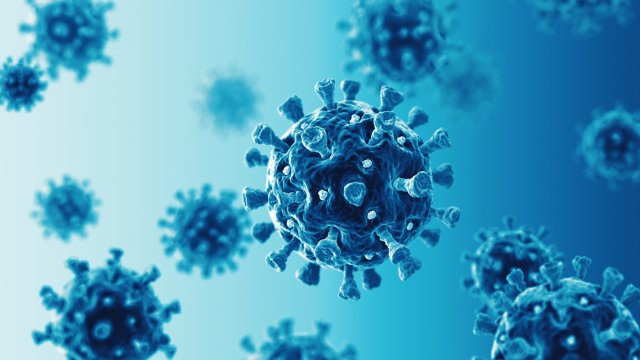EPA Researchers Are Evaluating SARS-CoV-2 in the Environment
Published May 6, 2020

Cleanup and Disinfection Evaluation
Reducing the risk of exposure to SARS-CoV-2 relies on effective cleaning and disinfection, along with public health strategies like testing and social distancing. EPA researchers are assessing the use of EPA-approved disinfectants against SARS-CoV-2 on surfaces and objects that are difficult to disinfect, like fabric and other soft or porous materials. We will also determine the best environmental sample collection methods and the limits of detection for SARS-CoV-2 on surfaces and objects. Researchers will also evaluate longer-lasting microbial disinfectants and application methods for surfaces and objects that are frequently touched by multiple people where it is not practical to disinfect after each person, like the surfaces in a subway car.
“Determining the best long-lasting disinfectants would be helpful for surfaces that are touched by many people, like seating and handrails in a subway car,” said Shawn Ryan, PhD, and lead researcher for cleanup and disinfection projects. “We are currently working with New York City Transit to help them make data-driven, informed decisions on which products are best to use for their subway cars.”
The results of this research will be shared broadly with transit agencies, and other organizations and businesses where it can be applied, across the country.
EPA researchers will also evaluate innovative ways to disinfect large spaces. Possible approaches include using alternative methods to kill viruses such as ultraviolet light (UV), ozone, and steam, and promising disinfectant application methods such as electrostatic sprayers or foggers.
“EPA has tested and approved these disinfectant approaches for harder to kill biological pathogens such as bacillus anthracis, the bacteria that causes anthrax. An enveloped virus like SARS-CoV-2 is easier to kill, but we want to make sure that we support these approaches with science and provide the right data so that decision-makers can apply the best approach for their specific situation,” added Ryan.
Another area of disinfection that researchers are addressing is personal protective equipment (PPE), including N95 masks. If shortages of PPE continue, having the ability to disinfect PPE without impacting its effectiveness will be critical for hospitals, nursing homes, and essential workers. EPA researchers will evaluate methods of disinfecting used PPE and evaluate whether the methods damage the PPE.
Ryan adds, “Our main focus for this research is to test disinfection methods that are known to kill the virus, but also ensure no damage to the PPE so that it still functions properly.”
Wastewater Virus Monitoring and Detection
Researchers at EPA and the Centers for Disease Control and Prevention (CDC) are developing and applying methods for measuring SARS-CoV-2 levels in wastewater. With an infectious disease like COVID-19, people may be contagious before they show any symptoms. Preliminary research indicates that monitoring wastewater for the presence of SARS-CoV-2 may be useful as a sensitive early indicator of an of an infected community. Having an early warning system to alert public health officials about infection in a community would be helpful. Likewise, monitoring SARS-CoV-2 in wastewater may also provide an indication of decreasing levels of infection within a community.
“Current efforts are directed to develop best practices for using wastewater surveillance data as part of a data-driven, weight-of-evidence approach to helping make public health decisions,” said Jay Garland, PhD, and lead researcher on the wastewater surveillance project.
The pilot will begin in Ohio with local wastewater utility partnerships, at the EPA laboratory located in Cincinnati.
In addition, while the risk to utility workers is considered low, EPA researchers will also focus on measuring the levels of virus in wastewater to better understand potential risks from exposure to untreated sewage.
“It is important to understand SARS-CoV-2 levels in wastewater from an infectivity perspective which is also a focus of our research,” said Kevin Oshima, PhD, a lead researcher for wastewater monitoring and detection.
Researchers will be using a combination of molecular and culture-based methods to characterize SARS-CoV-2 in wastewater.
Salivary Antibody Assay Development
EPA researchers are also working with researchers at CDC to develop a simple, low cost and non-invasive antibody test using saliva samples. Antibody testing helps identify people who have been exposed to SARS-CoV-2 but may not have ever developed symptoms, and who have subsequently developed an immune response. Such an antibody test could help public health officials determine the true rate of infection across the country.
“EPA has developed salivary antibody assays for a variety of pathogens,” says Tim Wade, PhD, lead researcher for the assay development. “Most of the assays out there today are based on blood antibody and we want to apply our salivary antibody assay approach as a more simple, lower cost, easier to implement version to help get to the true number of infections more quickly.”
For more information about EPA’s SARS-CoV-2 research, please visit:
